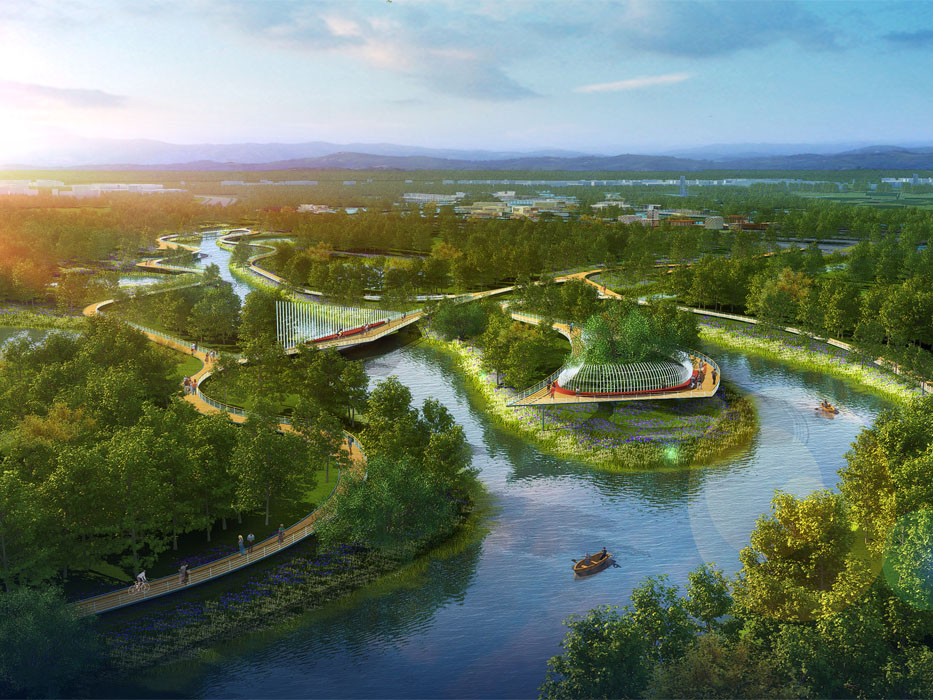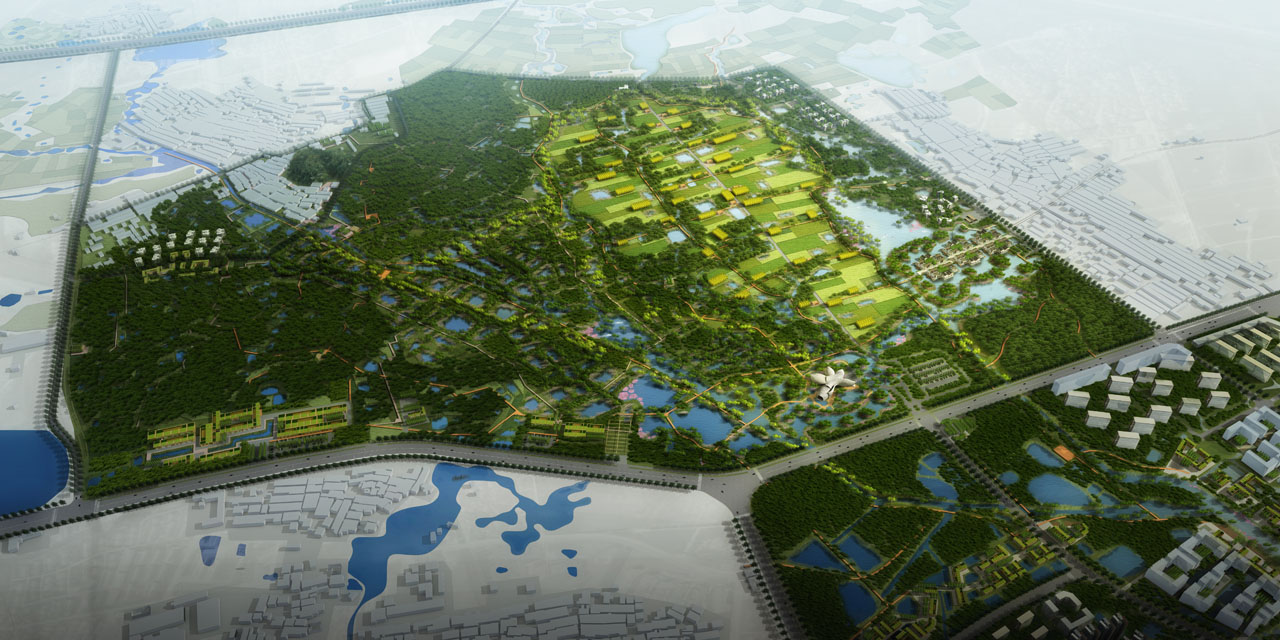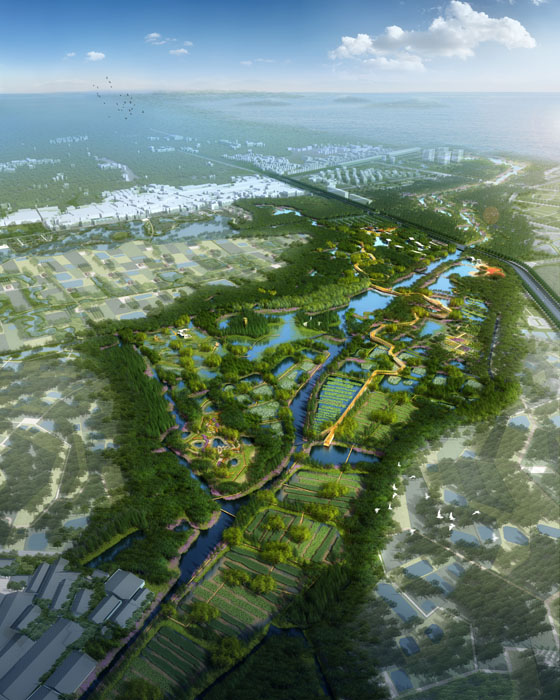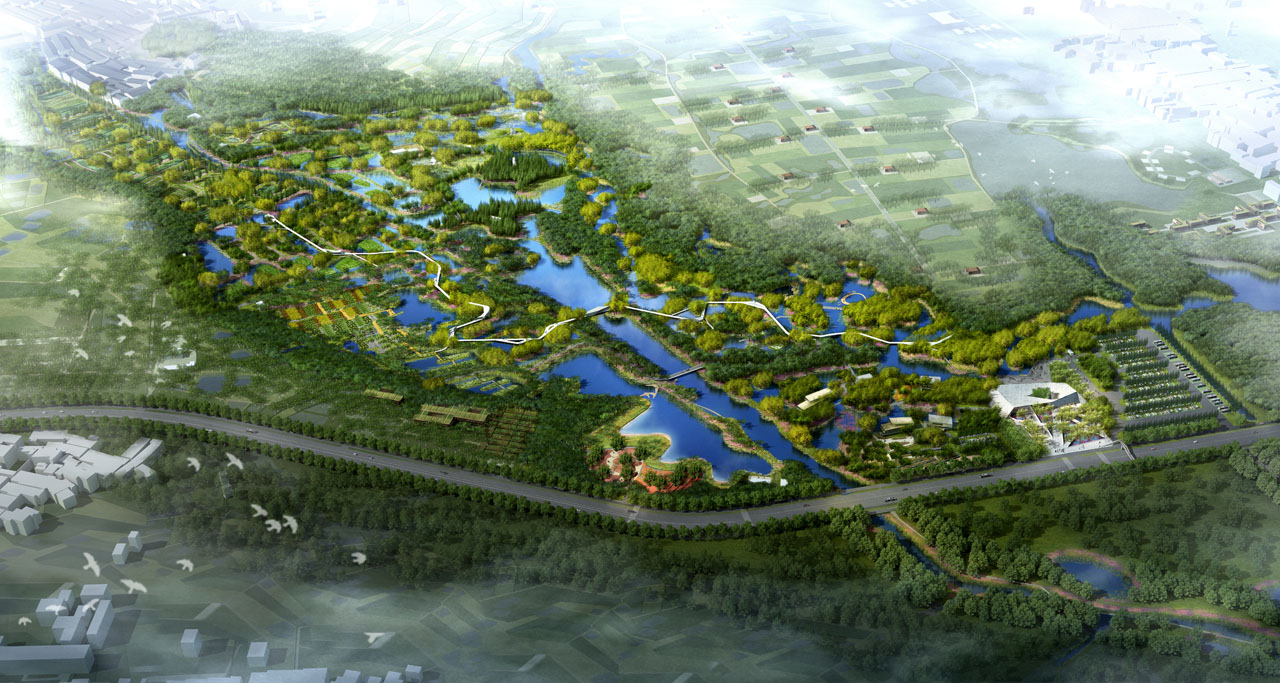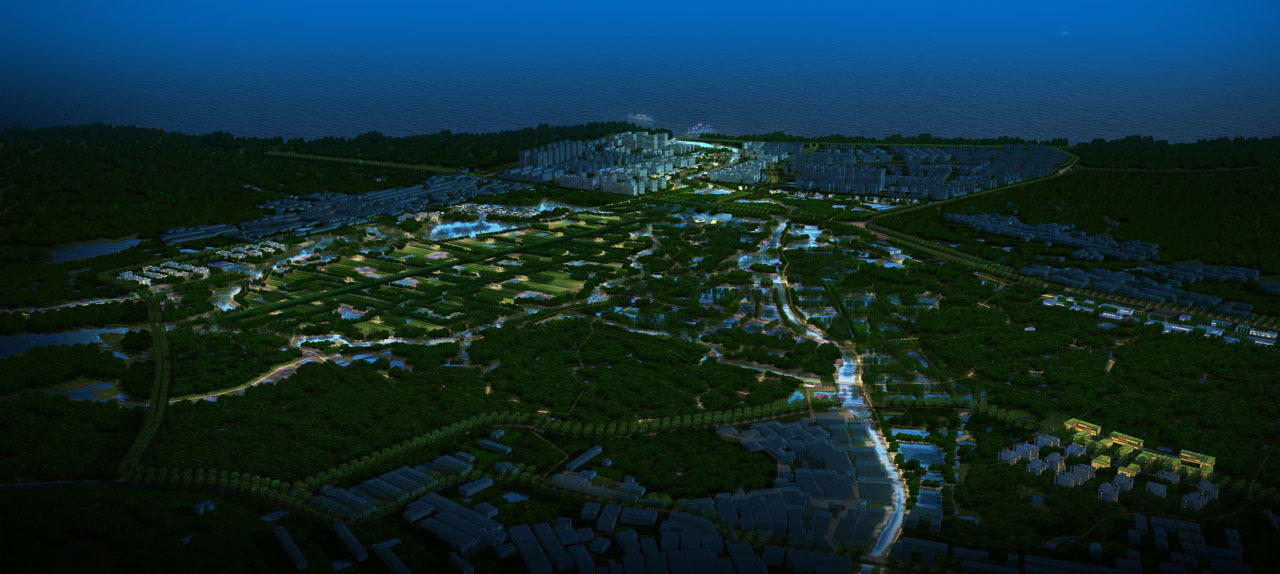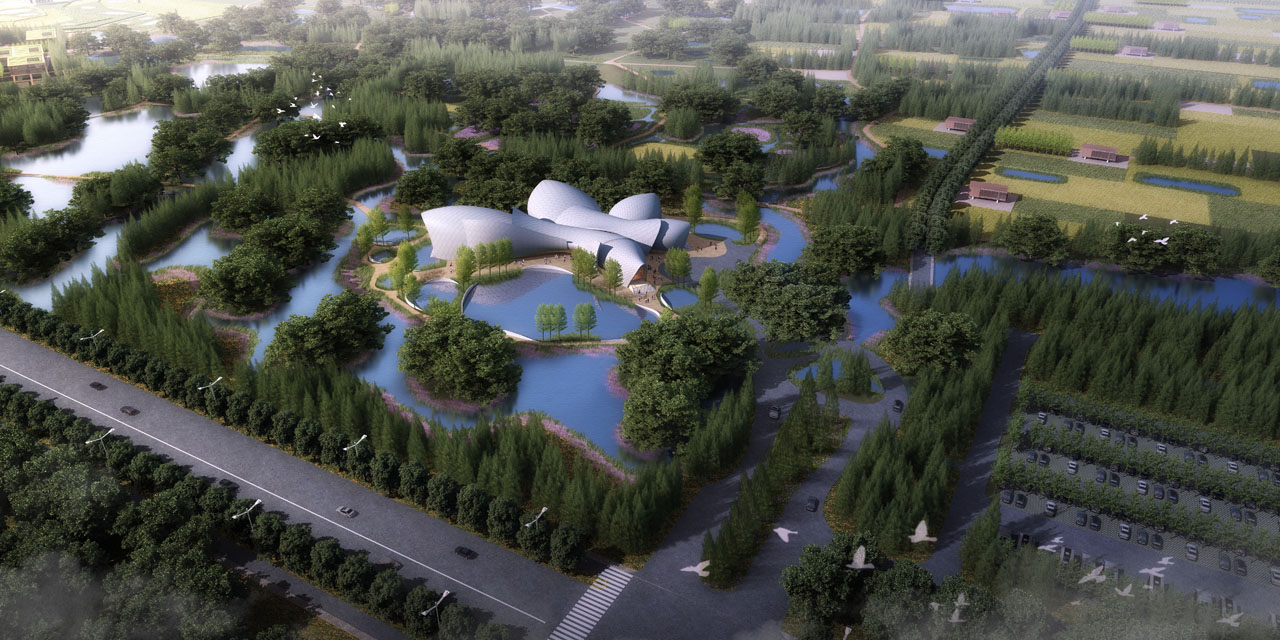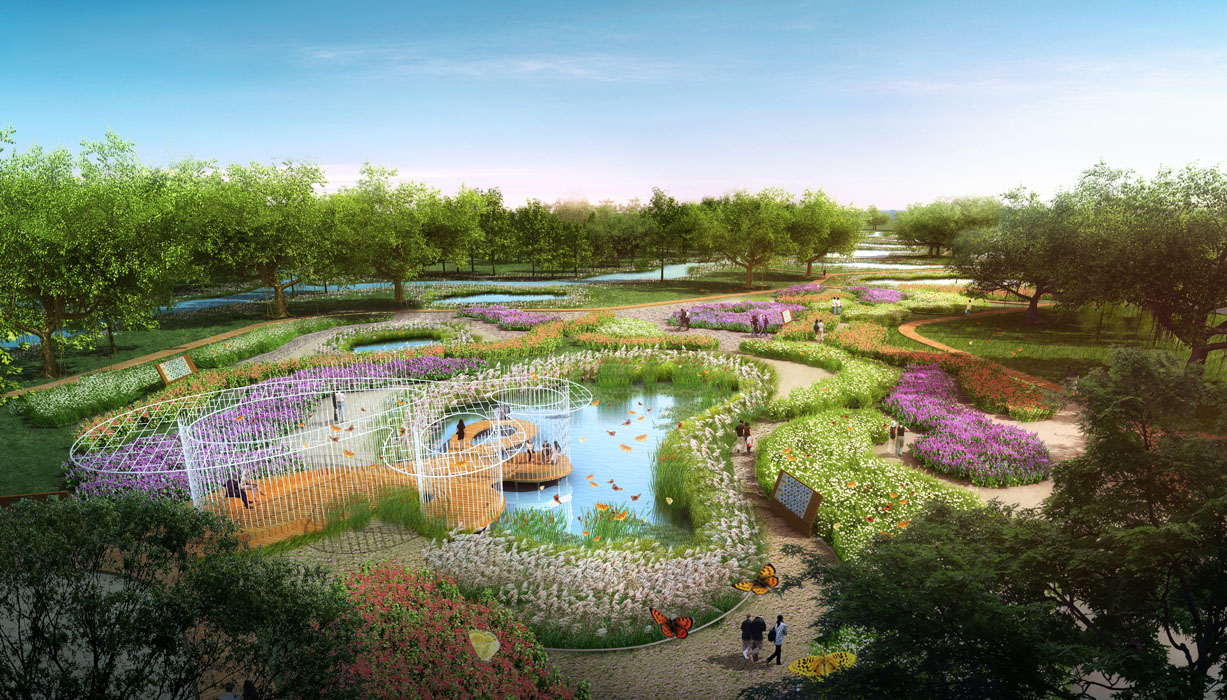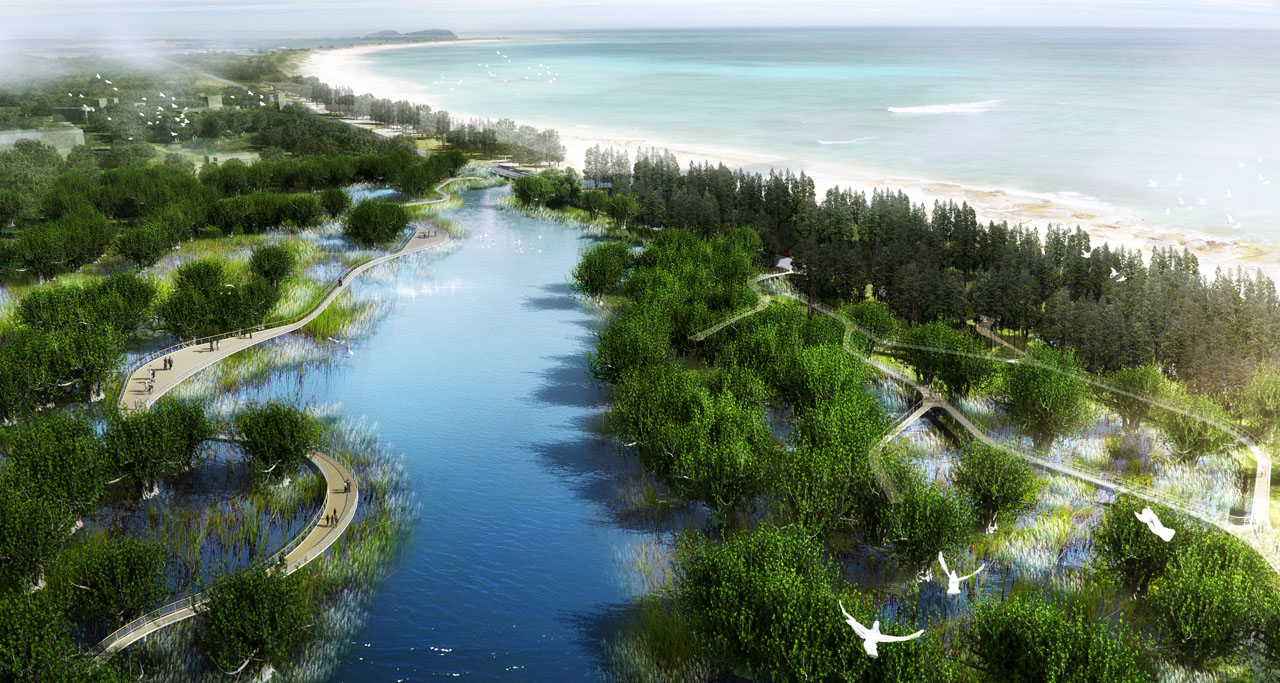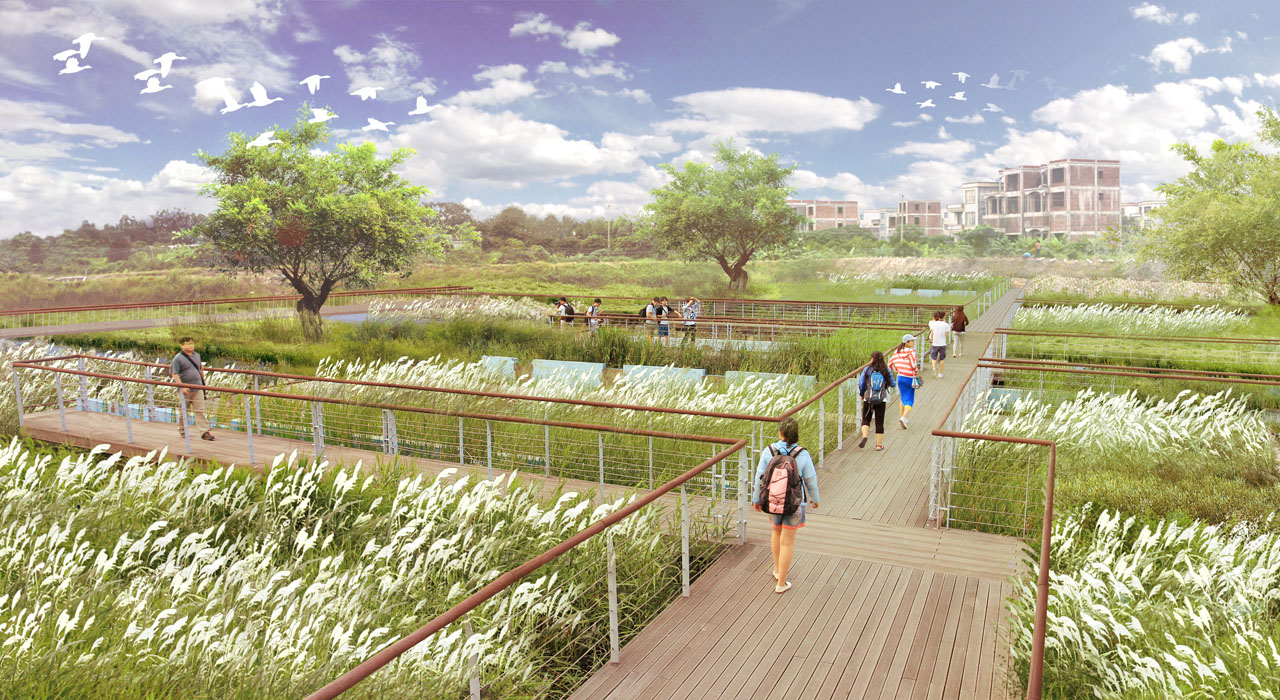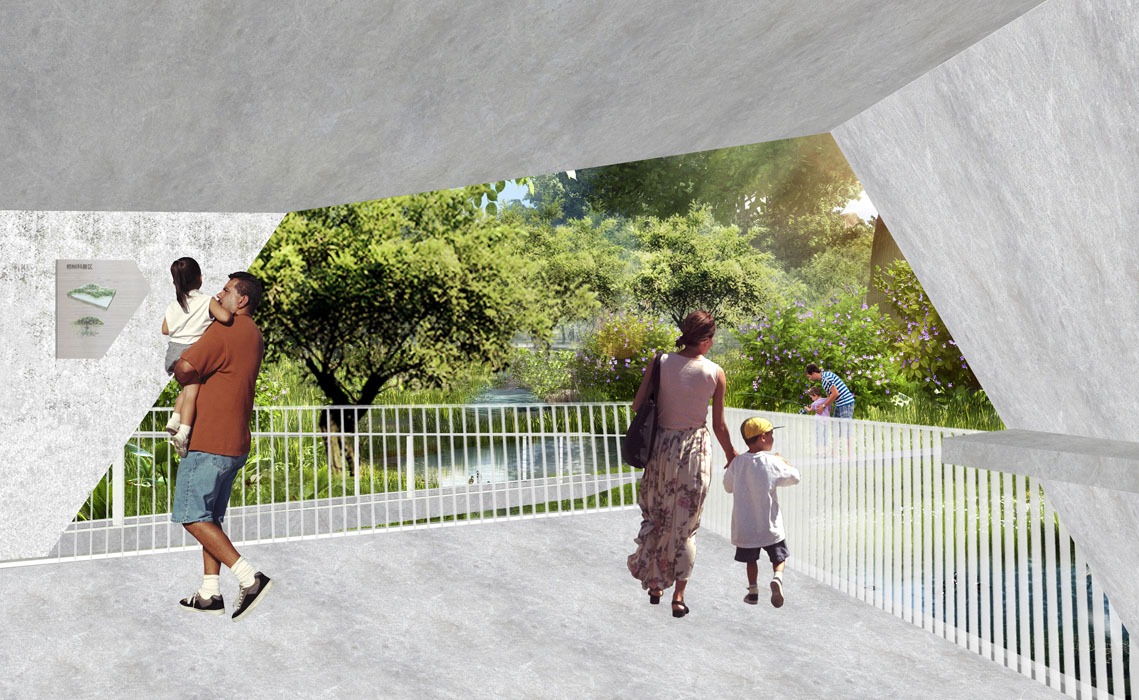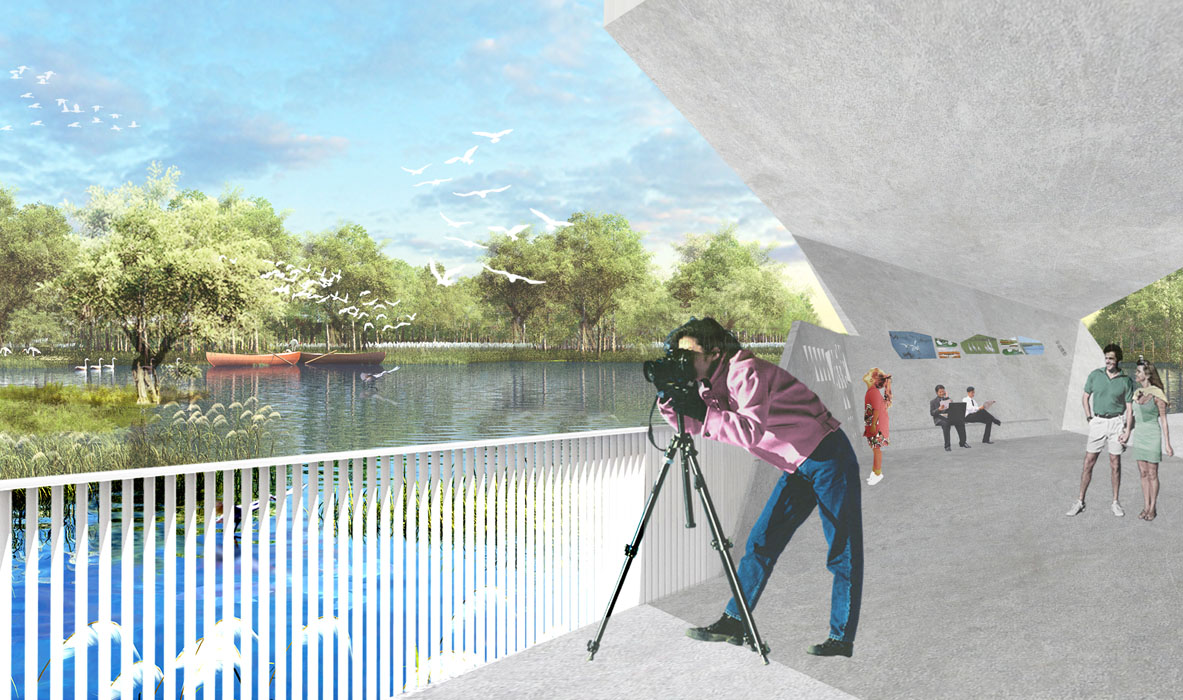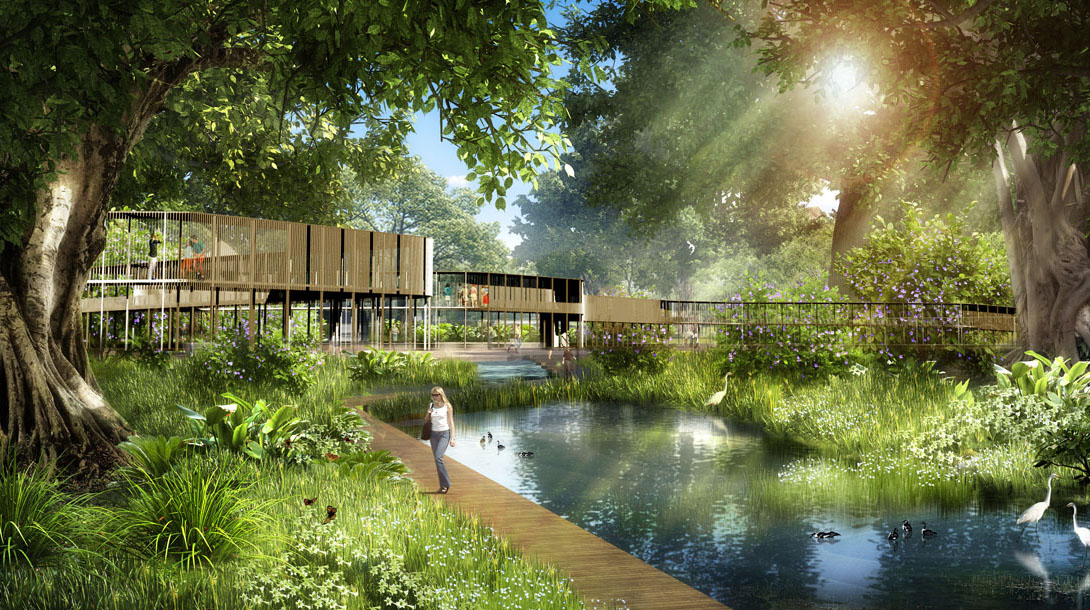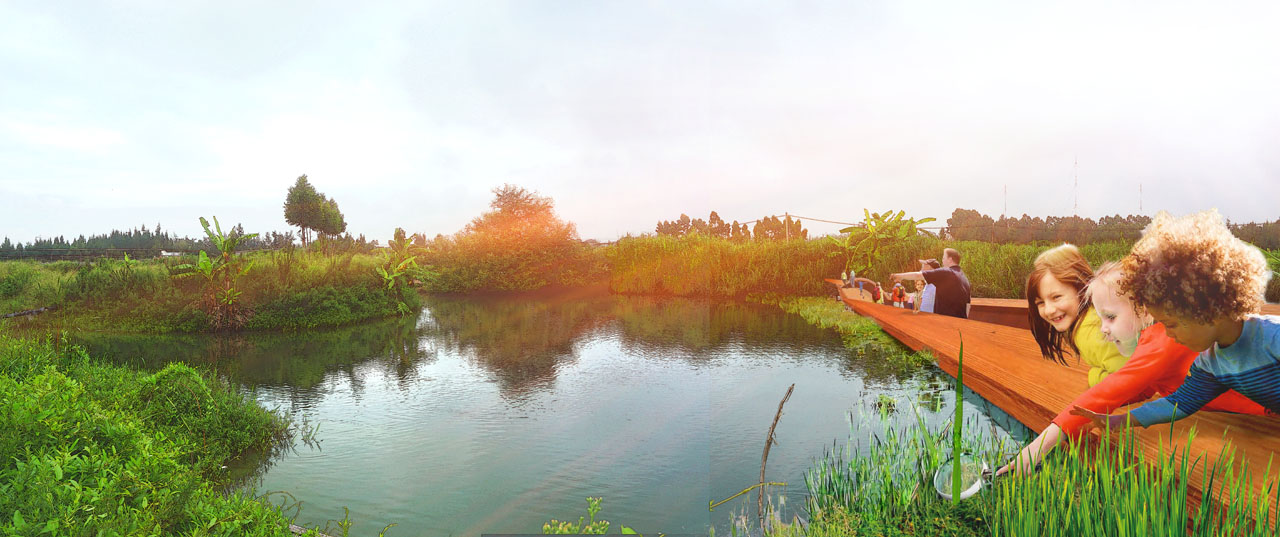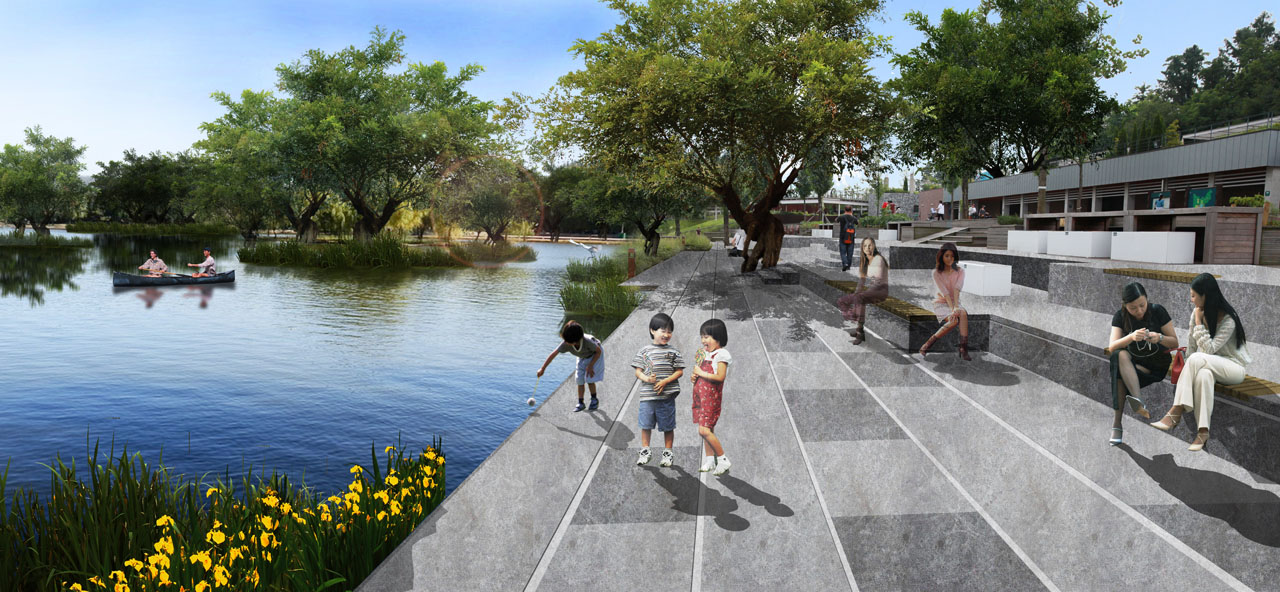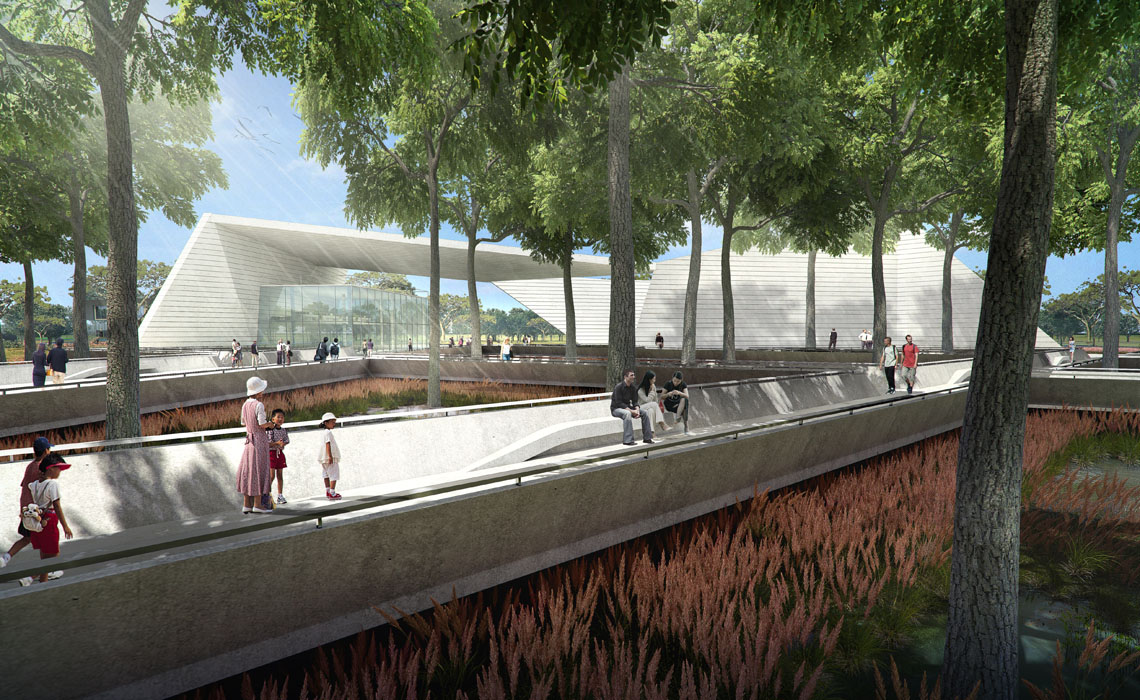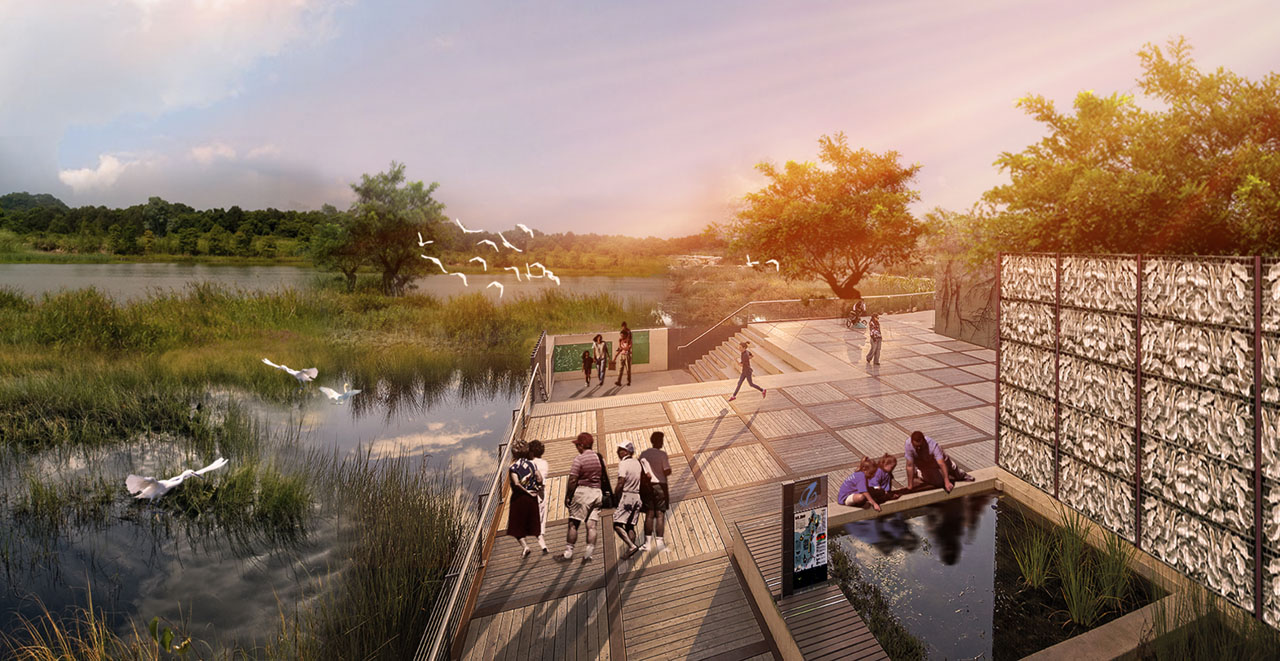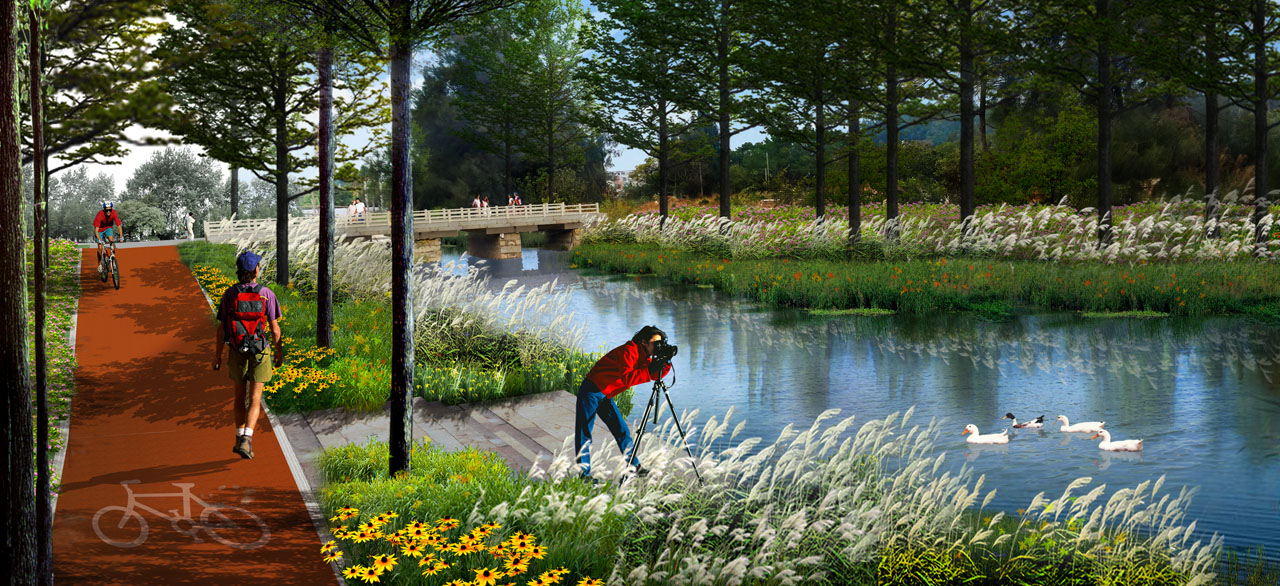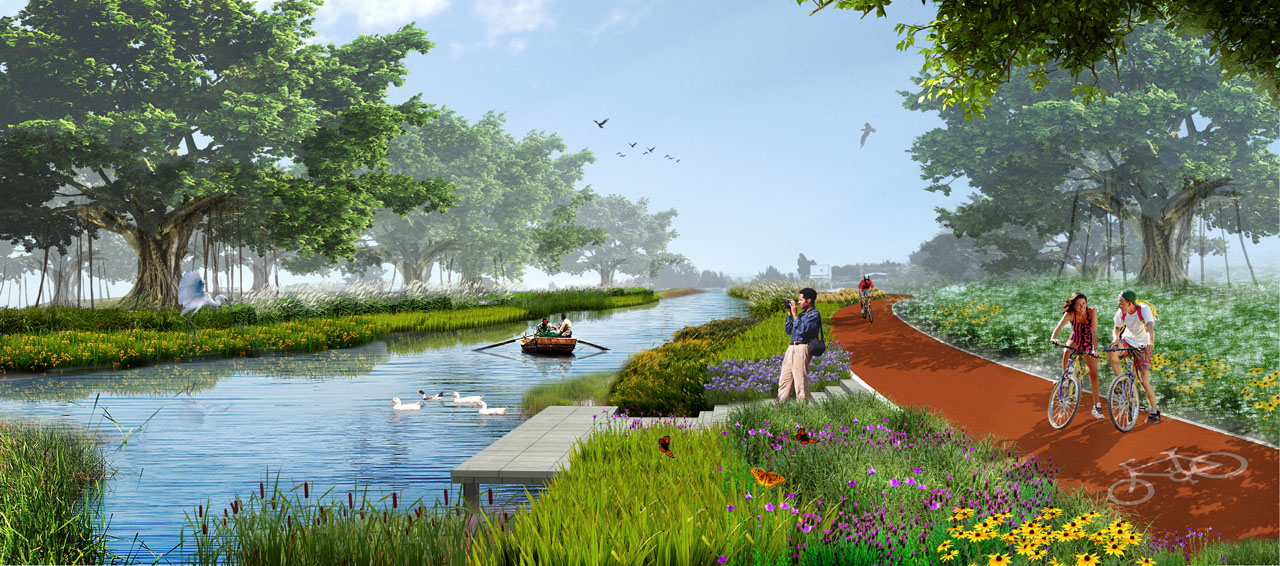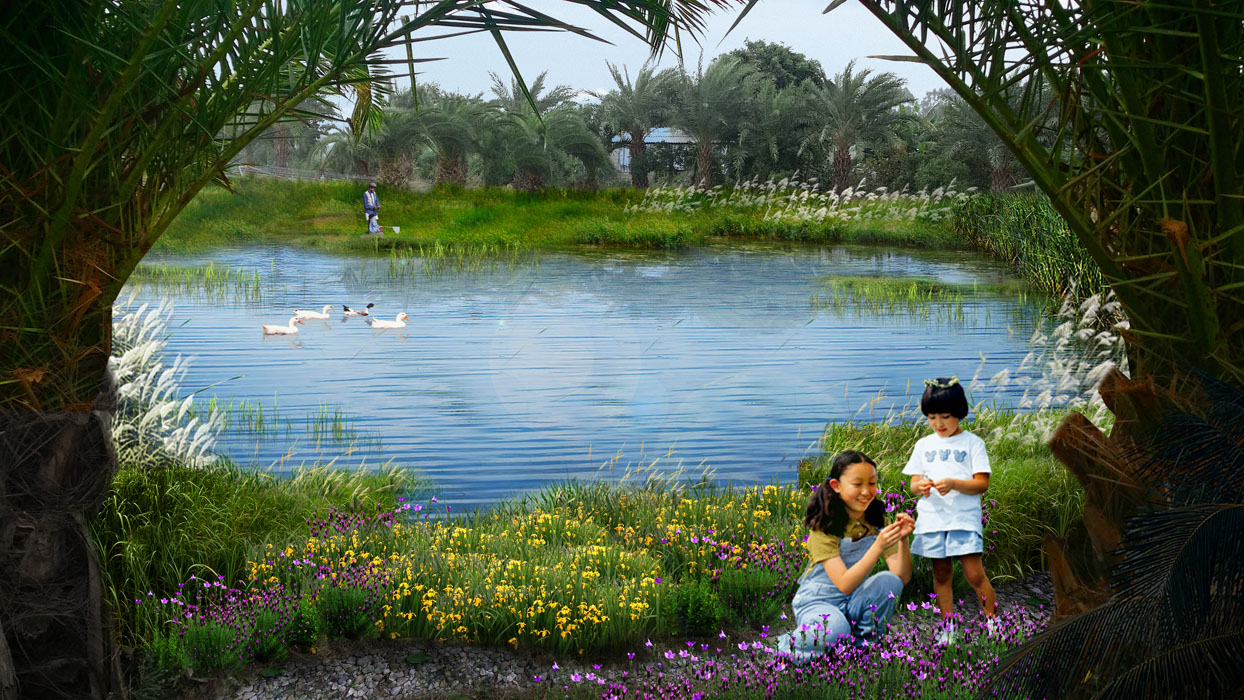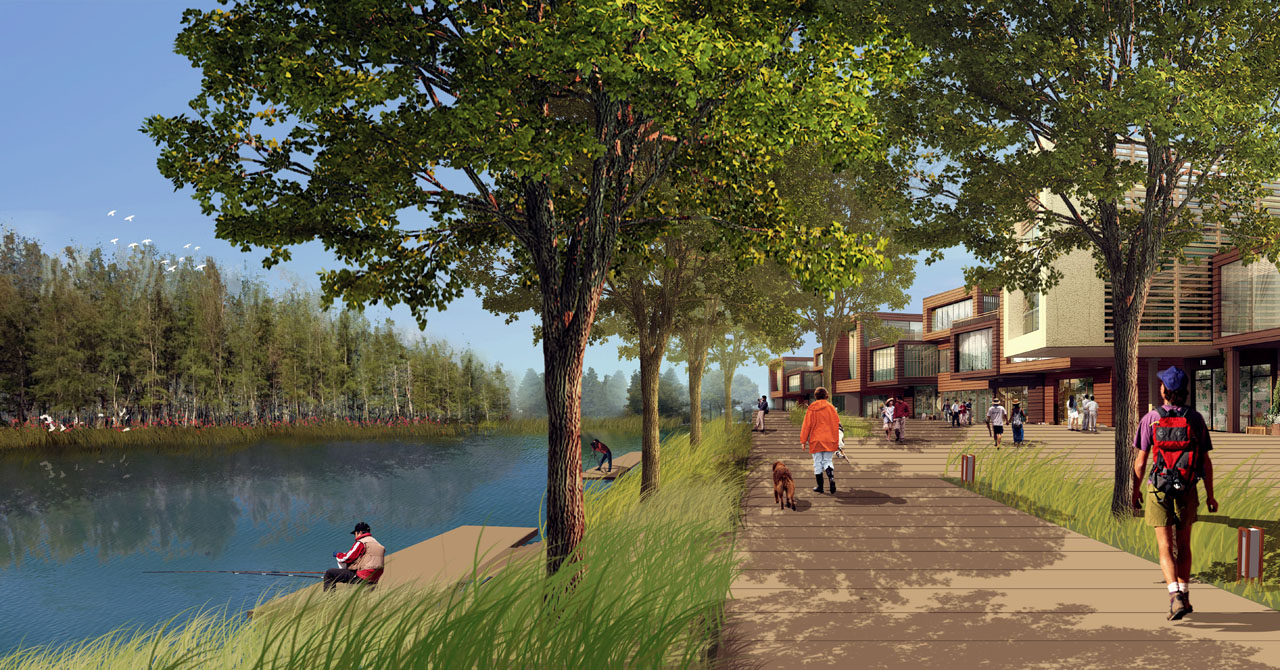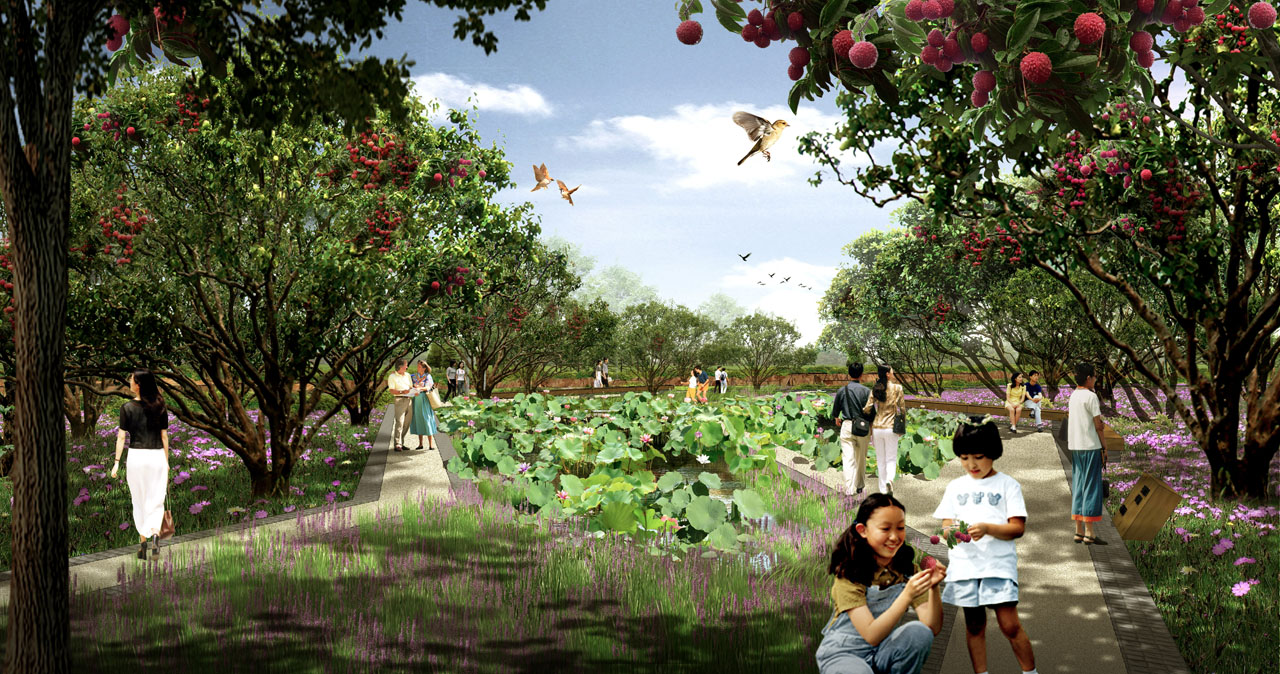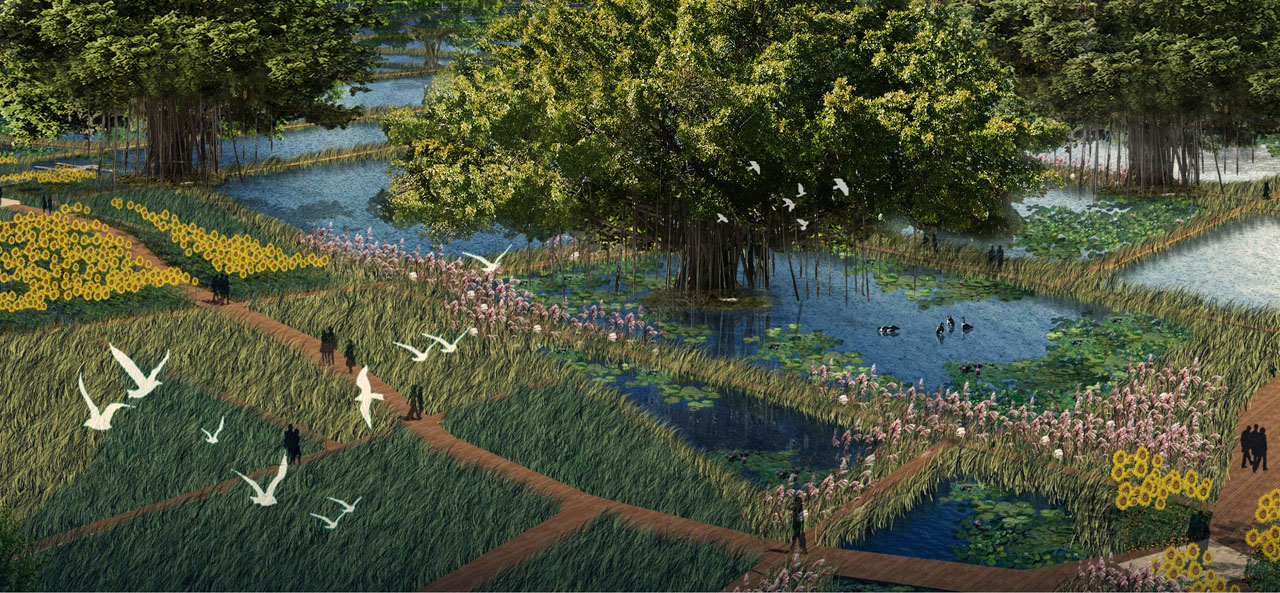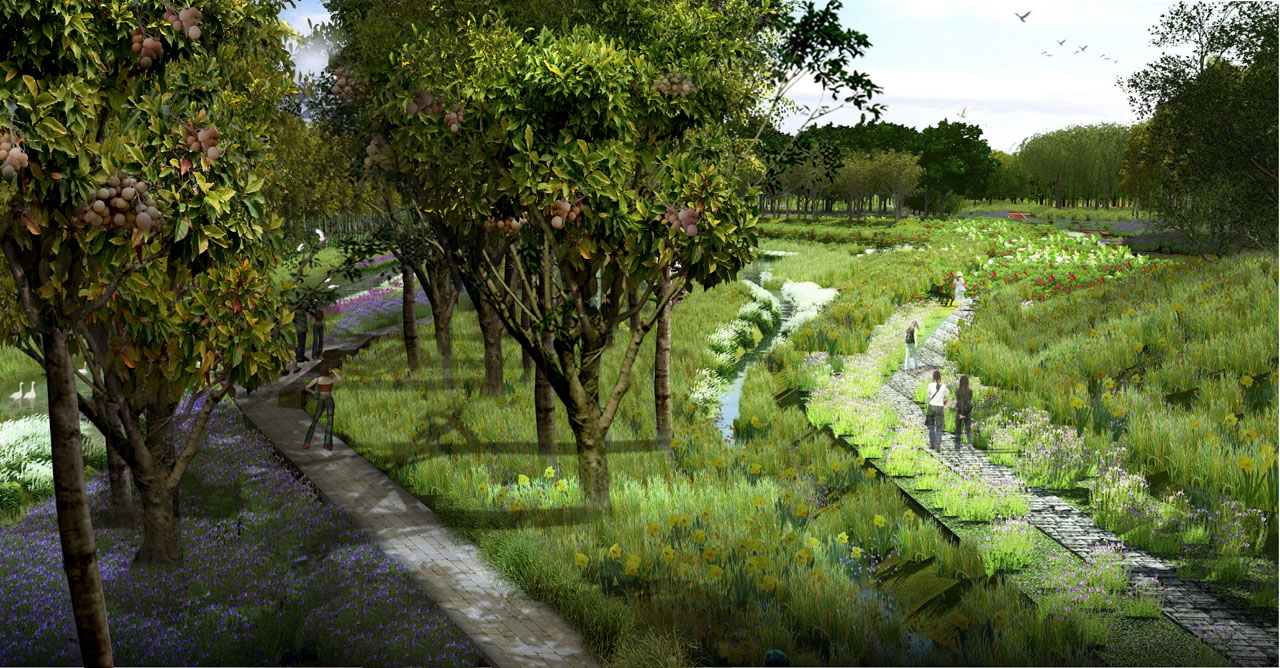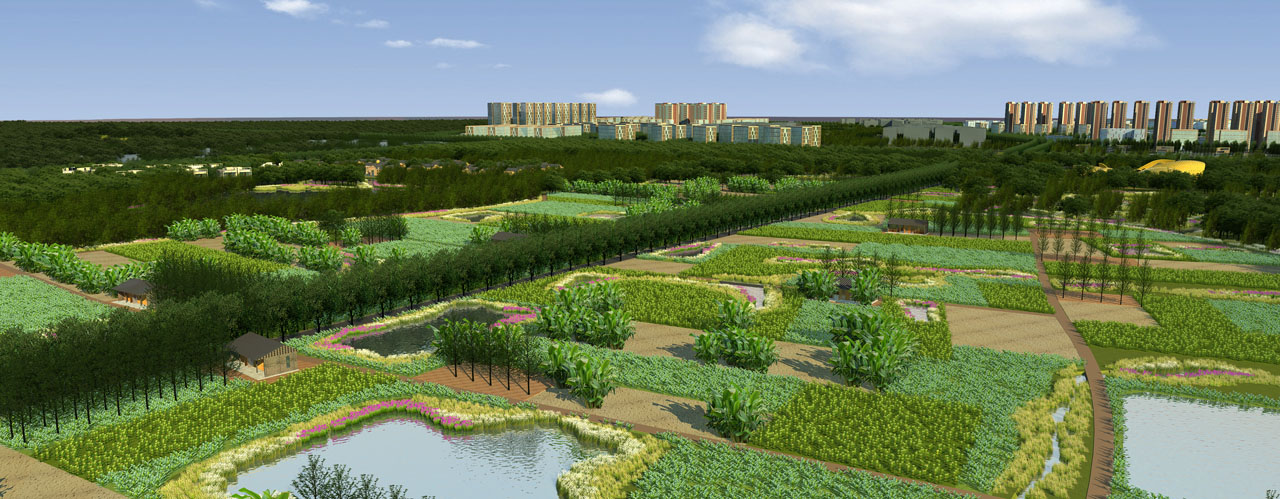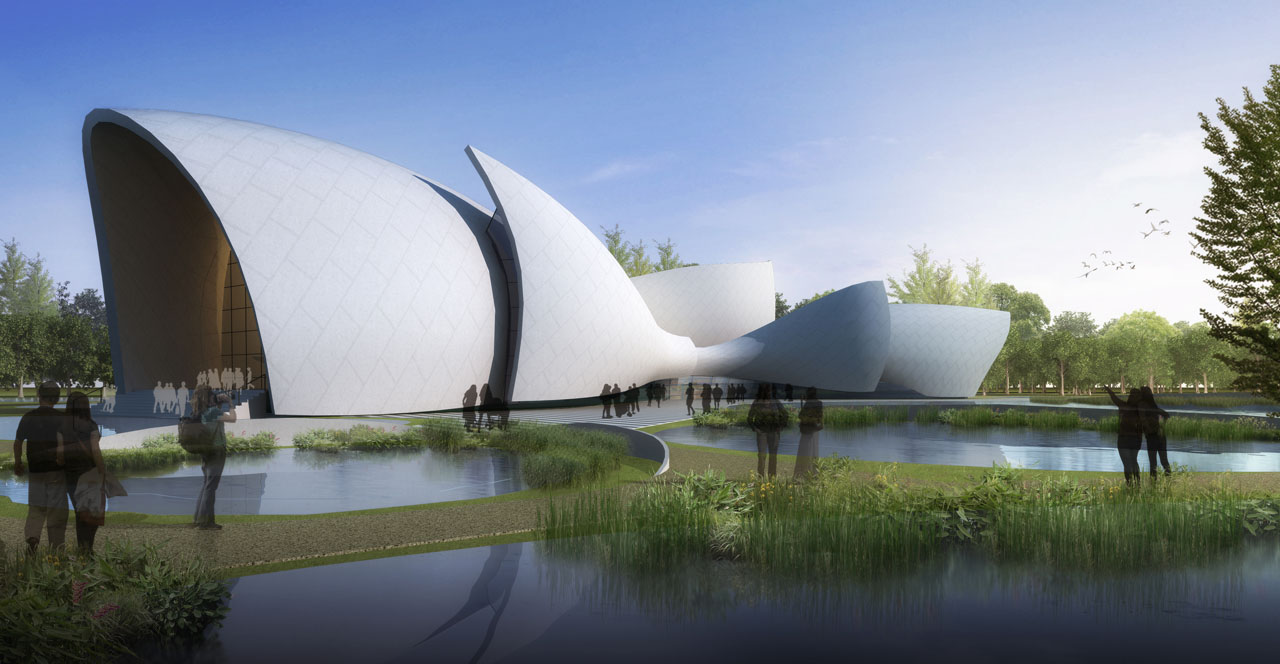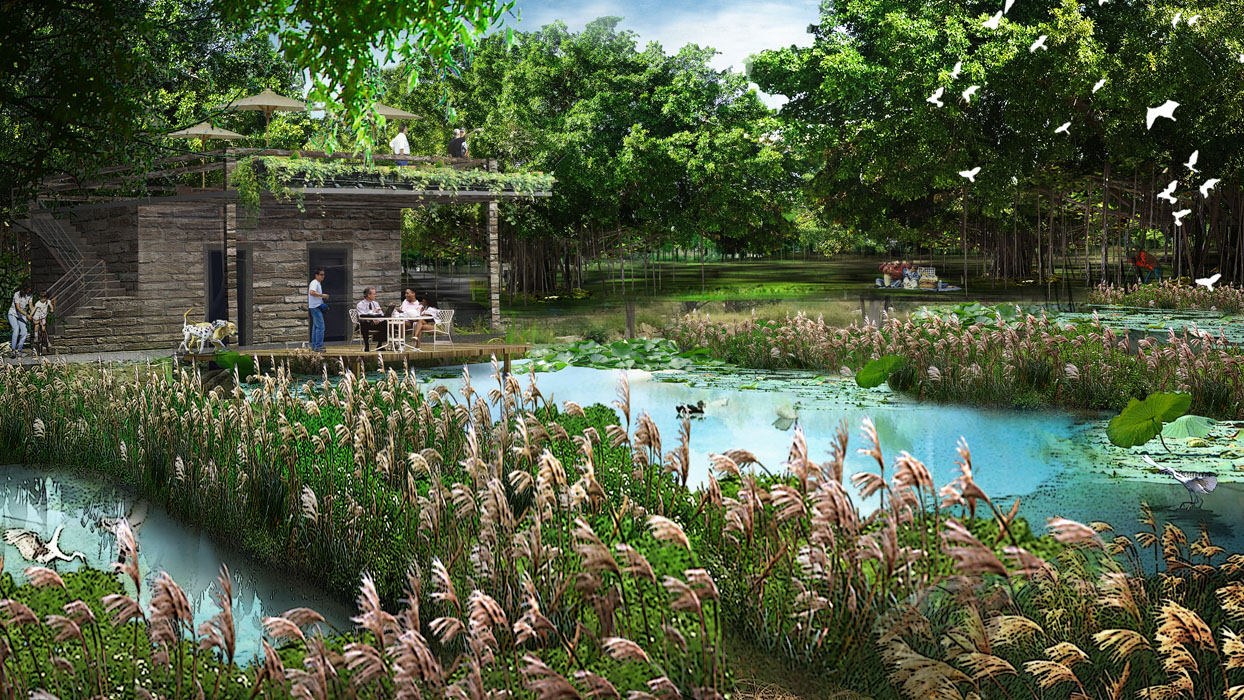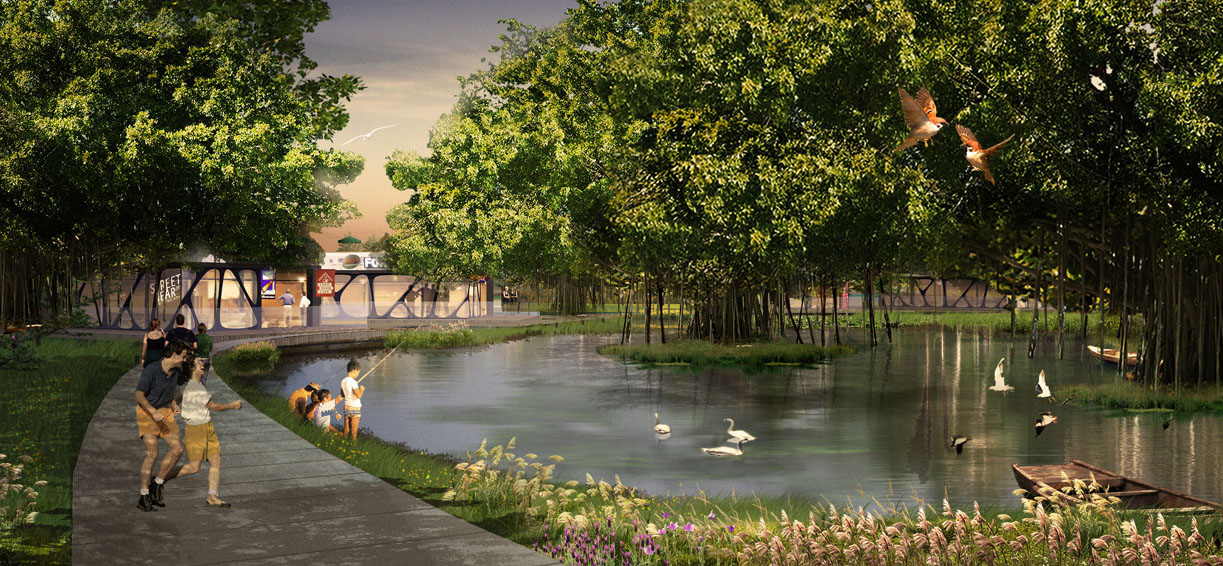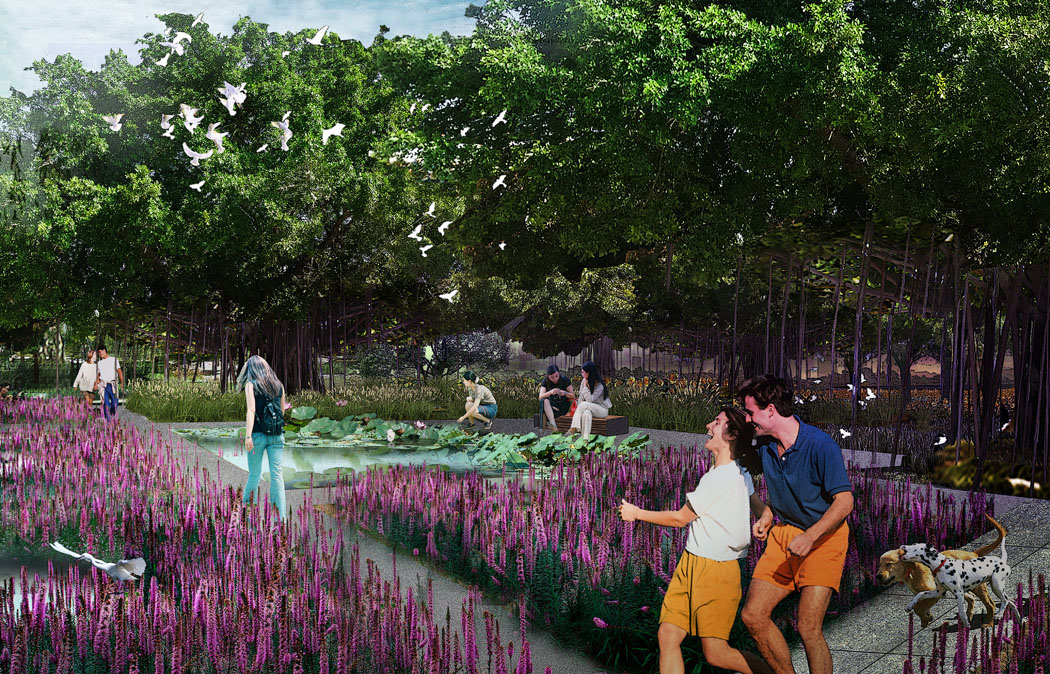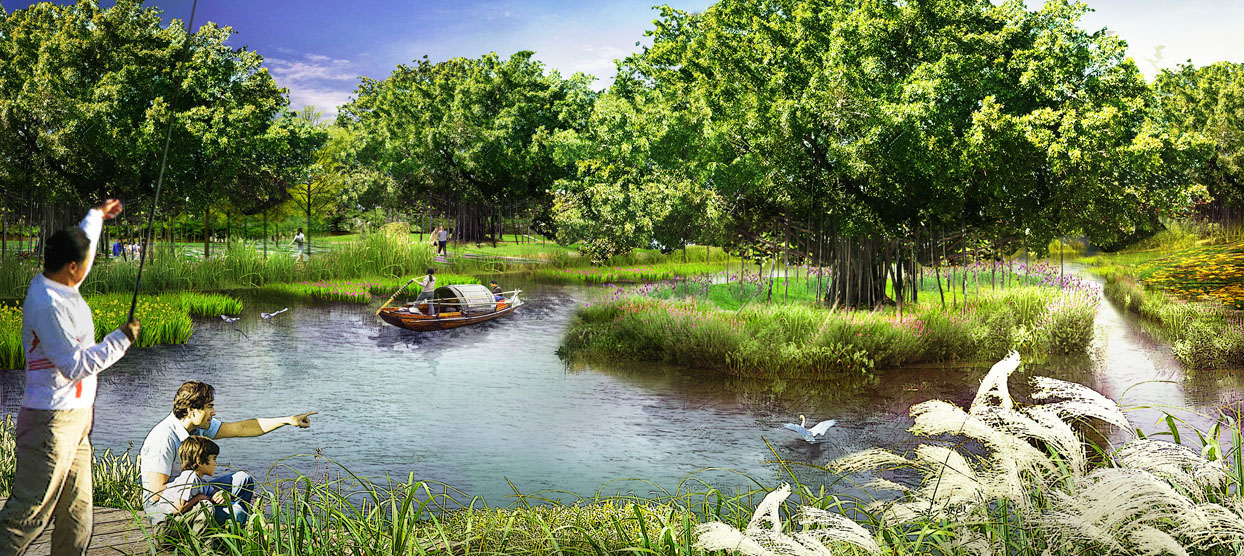Dongshan Central Sponge Park
Project Information
- Project Location:
- China Zhuozhou, Fujian
- Project Scale:
- 89.5 Hectares
- Design Time:
- September 2015
Project Profile
1. Project Statement
Dongchigang Ecological Park (Dongshan Central Sponge Park) is located in the central part of Dongshan County, Zhangzhou City, Fujian Province. It sits between the new town of Xipu Town and the old town of Tongling Town, at the core of the Dongchigang Ecological Park area, adjacent to the island's tourism service center, and covers an area of 2.76 square kilometers. Dongchigang Ecological Park (Dongshan Central Sponge Park) is a highlight project under the macro backdrop of the central government vigorously promoting ecological civilization construction and advocating for sponge city construction. It implements Dongshan County's positioning as an international ecological tourism island. Dongshan Central Sponge Park will be the "Central Sponge Ecological Park" between the two towns and a "vital waterfront belt" between the city and the sea. By transforming the existing shrimp ponds, creating habitats, and crafting landscapes, the project aims to develop a multifunctional sponge wetland that provides sewage purification, stormwater management, biological habitat, and recreational spaces.
2. Objective and Challenge
In the upper reaches of Dongchigang, the village of Zhangtang in the northwest of the start-up area, daily domestic sewage, and aquaculture wastewater discharge, river channel hardening, and fragmentation of water systems have caused water pollution in the Dongchigang river. A sewage treatment plant is needed to purify the domestic sewage. This project attempts to use artificial enhanced wetlands, employing subsurface flow wetlands, surface flow wetlands, and oxidation ponds to quantitatively purify upstream sewage, ensuring the water quality is suitable for landscape irrigation, without initially building a sewage treatment plant. Additionally, Dongshan experiences concentrated rainfall, leading to frequent drought and flood disasters. Statistical analysis reveals extensive submerged areas within the site. The design will transform the numerous existing shrimp ponds along the riverbanks into flood retention wetlands, making the entire start-up area a sponge for urban stormwater management. Drawing on the development models of Hong Kong Wetland Park and Xixi Wetland, this project aims to be a catalyst for Dongshan Island's development, with a clear new urban brand theme—China's first international-level ecological tourism destination themed around sponge cities.
Aligning with National Standards—Aiming for a National 5A Scenic Area and a National Urban Wetland Park.
Diverse Content—Focusing on wetland conservation, wetland science education, tourism, and recreation as the main content.
Sustainable Economy—With future leisure and vacation projects developed on the outskirts of the core area as economic benefits.
3. Design Strategy
- One Core: The multifunctional sponge wetland as the core.
- Three Features: The three main features are native sandy vegetation landscapes, banyan island landscapes, and mangrove landscapes.
- Three Spirits: Butterflies, egrets, and fish are the park's three adorable spirits.
- Two Main Lines: Modern sponge city practices and Gu Gong's ecological sand control road as two main lines.
- Multiple Functions: A multifunctional urban wetland park with wetland conservation, science education, and recreation.
By transforming the site, the project aims to create a multifunctional sponge demonstration area.
- Purifying Sponge: Wetland hierarchical purification of domestic sewage quantitatively controls pollutants through a series of artificial enhanced wetlands, purifying domestic sewage to meet most surface water Class III standards. In the short term, through artificial enhanced wetlands, most of the effluent quality indicators can meet surface water Class III standards. During the rainy season, when river water volume exceeds 3,500 t/d, overflow water quality reaches the secondary standard of sewage plant effluent. In the long term, after separating rainwater and sewage and building a sewage treatment plant, sewage can be fully treated to meet Class III water standards through sewage treatment and wetland purification. The water system is connected, and water quality is maintained through various means, such as pond connection, water activation, and algae-eating insects, ensuring water quality meets surface water Class III standards.
- Elastic Sponge: Existing ponds are lined, with poor storage capacity, and hardened river channels disrupt ecosystem circulation. Through cut-and-fill, adding banyan islands, optimizing lining measures, transforming river channels into natural revetments, and connecting ponds and river channels, the project aims to reduce water volume, decrease evaporation and infiltration, and enhance the sponge system's storage capacity. By connecting ponds and water systems through cut-and-fill and connecting pipes, water levels vary with rainfall, creating different seasonal water landscapes.
- Productive Sponge: In the wetland purification area, select crops with strong root systems combined with surface and subsurface flow wetland purification processes to achieve dual purposes of domestic sewage purification and crop productivity. In the ecological oxidation pond area, combining fishpond aquaculture achieves abundant fish and shrimp yields. In the wetland purification area, plant subsurface flow wetland crops characterized by corn and surface flow wetland crops characterized by arrowhead. At the end of the purification area, use ecological oxidation ponds to cultivate ecological shrimp, forming productive wetland crop areas and aquaculture zones.
- Diverse Sponge: Create a rich ecosystem and showcase diverse wetland landscapes by simulating eight wetland habitats and one sandy habitat. Survey existing or conditionally existing wetland types in Dongshan and present them on our site, providing rich habitat conditions for wildlife and showcasing diverse wetland landscapes for visitors to experience the process of wetland succession. Based on the site water system and node design, arrange the nine habitats rationally. Create banyan island wetland landscapes to meet special viewing needs, echoing the science education function of the wetland succession area. Create various habitats such as marsh wetlands, herbaceous wetlands, reed wetlands, and forest wetlands. Combine regional water purification needs and existing fishpond distribution to create multi-pond wetlands. Form river and lake wetlands with the central water system, sandy habitats with the sand art theme area, and mangrove wetlands with the special water features of the estuary. Carefully craft diverse recreational products, focusing on three main themes: sponge wetlands, special landscapes, and adorable spirits.
- Sponge Wetland Theme: Focus on wetland purification and wetland type science education.
- Special Landscape: Focus on sightseeing, science education, and recreational activities.
- Adorable Spirits Theme: Focus on science education, photography, and viewing, creating various recreational products to meet the needs of different groups. Science education is the park's primary function, running through various zones and targeting different age groups. Recreation and entertainment are interspersed throughout the zones, enriching visitor activities, with the sandy theme park being the most concentrated. Leisure and vacation products are distributed in small quantities to enhance the park's economic benefits while meeting the leisure needs of mid- to high-end individuals. Considering local heavy rain and sun exposure, design special corridor bridges as unique wetland sightseeing and science education paths with shade and rain protection features.
4. Conclusion
Through these landscape design strategies, the wetland hierarchical purification of domestic sewage quantitatively controls pollutants through a series of artificial enhanced wetlands, purifying domestic sewage to meet most surface water Class III standards. The elastic sponge addresses the previously uncontrollable drought and flood-prone site, enriching its wetland types on the originally single pond wetland, balancing conservation and tourism development principles, and creating a unique wetland science education and leisure tourism experience. This project will become a new landmark for Dongshan ecological tourism.
